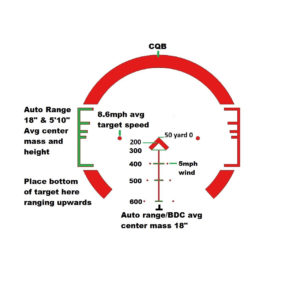For someone who needs accessories, tactical handguards offer a place to mount optics, grips, lights and other items.

There are several features that differentiate the Krebs UFM system from other products.
First off is its KeyMod configuration. By definition KeyMod handguards are light because the fat is trimmed. Constructed with 6065 T6 aluminum, there are no Picatinny rails bulging out. The beauty of KeyMod is that you add weight only when necessary. If you need to affix a vertical grip or a light, simply slap your own rail and cinch it down exactly where you want it.

Installation of the UFM is not difficul and ttakes about 30 minutes. Krebs provides a set of aluminum angle irons that allow you to clamp down a fixture on the barrel without destroying the finish. Key to the set up process is squaring the handguard’s clamp (done easily with a level) with the receiver to ensure that the unit fits perfectly. The kit consists of Allen wrenches, bolts, a barrel clamp to secure the handguard and a couple of small angle irons that don’t quite look like they belong. (The instructions explain all.)

The ergonomics of this handguard are noteworthy. Unlike a conventional handguard/quad rail, which has all the comfort of a pineapple, the Krebs UFM is sleek, thin and quite comfortable to grip. It’s as if the handguard is an extension of the receiver. It also doesn’t get hot when you are putting multiple rounds through it. When I put it through its paces, it never got warm enough to be uncomfortable.
One additional attribute: It’s also the only KeyMod rail that can be field-stripped. The upper rail section is easily removed by pinching two springs, pulling the upper section rearward, then up and off the rifle.
The price is $269.99. You can get handguards from other manufacturers such as Midwest Industries for less but they are not in the same class. In my opinion, Krebs Custom sets the standard.

One of the newests products on the scene is the TROY iM-LOK series of rails for AK-47. Machined from hardened aircraft aluminum with stainless steel components and finished with a MIL-SPEC hardcoat anodizing, these rails are light and sleek. Railed Gas Tube will fit Russian, Romanian, Bulgarian, some Chinese, US and other variants with a standard length gas tube. Handguards will fit stamped receiver AKs (not milled receiver). Will work with some Bulgarian, Romanian and Egyptian lower handguard retainers. Others may need some minor modification to fit properly. Replaces factory handguards easily; no gunsmithing required. Cooling holes allow the rail to run cool, even after extended firing. Machined from hardened aircraft aluminum with stainless steel components and finished in MIL-SPEC hardcoat anodizing. Attach optics and accessories to the top Picatinny Rail.

Another manufacturer of high end rail systems comes from a small firm called Manticore which makes a variety of products such as top covers, extended rails and forends. They don’t get a lot of press and it’s undeserved. Their gear is competitive with Krebs, Troy and other name brands.
Tdi-Arms, out of Israel, makes handguard/rail products for the AK used by the IDF. Of particular interest is its X47 Universal AK Rail system, a modular set up that can be used in several ways. This entails a lower handguard, a lower and upper handguard, or as a lower and extended optics mount. (The Tdi harndguard is available from Circle10AK).

Our Optics editor, Tim Yan has given rave reviews to a new product called the CAA KeyMod handguard. Originally developed for IDF naval commandos, you can co-witness with an optic and even mount night-vision gear on it. It has a long rail extension that hangs over the dust cover.
UltiMAK has a comprehensive line of highly regarded AK products. They design and manufacture lightweight rail systems for Russian, Bulgarian, Chinese, Romanian, Serbian and other variants as well as Krinkovs, pistols and shotguns. They also sell gear such as optics and stock kits.

Editor’s note: Much thanks to Tim Yan of GunsandTech for his photos.



















